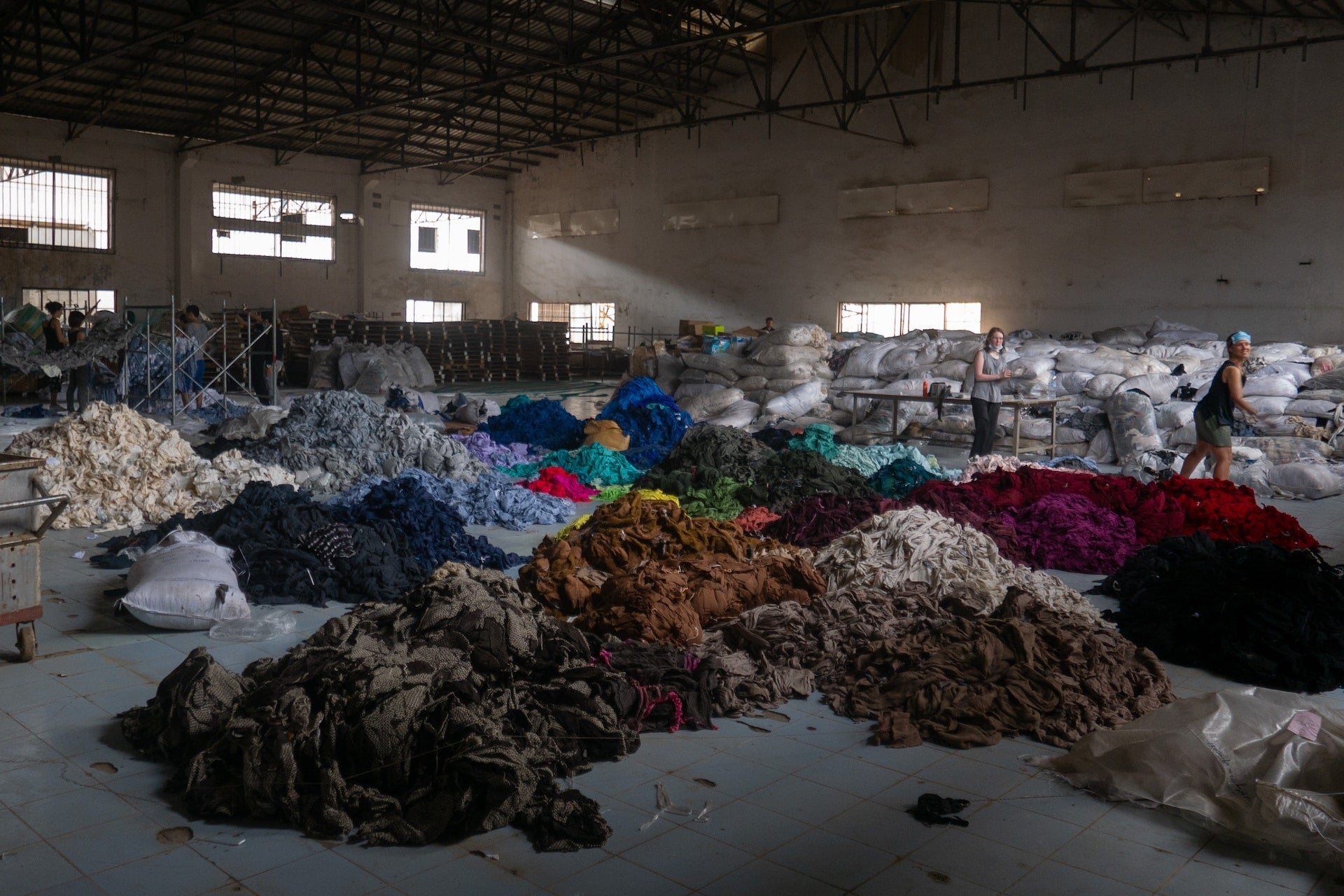Words help build stories, but are rarely enough on their own to stir emotions and enact change. Whether trying to convince a fellow shopper to switch brands or a potential investor to sign, numbers make the difference when trying to compel others into action.
To help you shape a rousing narrative, we’ve gathered 25 relevant facts on sustainable fashion: starting with the state of things, moving on to the forces demanding change, and ending with a glimpse into where it’s all headed.
Thankfully it's not all doom and gloom, provided we take real action and sustain it, too.
Facts that show the industry needs to slow down
Radical changes are needed where others are negatively affected - from disregard for the environment to improper treatment of workers. While fast fashion's problems need no introduction, let’s look at the industry as a whole to understand how sustainable is the fashion industry?
- Fast fashion is responsible for 2-8% of the world’s greenhouse gases. That’s more GHG emissions than international flights and maritime shipping combined. (UN)
- Microfibres from synthetic fabrics generate 16-35% of microplastics going into our oceans. It’s no surprise that companies are investing in sustainable materials development, coming up with surprising innovations like mushroom-based leather and plant-based nylon. (European Environment Agency)
- Waste has become the norm. It’s reported that the average person wears a piece of clothing only 7 to 10 times before throwing it away. (Ellen MacArthur Foundation)
- In terms of money, under-wearing clothes and failing to recycle them results in a $500 billion loss. But, this also means there’s a humongous $500 billion dollar economic opportunity out there. (Ellen MacArthur Foundation; Unearthed)
- Fashion is the second most water-intensive industry, using 93 billion cubic metres annually. The use of water isn’t necessarily a bad thing, but the problem comes when we dispose of untreated wastewater into the earth’s clean water sources. (Euronews)
- Despite the tumultuous global events that have slowed down economies and industries, fashion bounced back after a year of negative growth in 2019. Its value is expected to reach almost $2 trillion before 2030, only emphasising the need for positive change in a globally significant industry. (Statista)
Facts on the folk demanding change
As much as brands have a role to play, it ends with the people who support - or don’t support - their products. Here’s some insight into what they want - and what’s stopping them.
- In the US alone, 80% of young adults (18-34 years old) are willing to pay more for sustainable brands. (PDI Technologies)
- Globally, 65% of fashion buyers care about the environment. (Bain & Company)
- 70% want to know how the brands they shop from contribute to social as well as environmental issues. Only 46% actually consider these before buying. (Markstein and Census Insights)
- The shift in attitudes is clear in social media. In 2020, the phrase “slow fashion” generated more than 90 million social impressions. Just remember that one thing is transparency, another is greenwashing. (Lyst)
- 76% of the 33 million first-time secondhand shoppers in 2022, intend to increase their spending on secondhand clothing. At the same time, more brands are launching take back programs. (GlobalData)
- Contrary to popular belief, Millennials do more for sustainability than Gen Z. 43% say they have made large changes to their lifestyle, and 41% buy fewer, but higher quality items. (33 Seconds)
- 69% of consumers feel that the importance of sustainability has grown over the last two years. Yet, they acknowledge cost, access, and lack of clarity, as the main barriers to adoption. (NielsenIQ)
Facts on the business case for sustainable change
Here are six reasons why sustainable business is better for people, the planet, and profit.
- Products with ESG-related claims averaged 28% cumulative growth, versus 20% for products that had no such claims. (McKinsey)
- 72% of retail workers are more loyal to sustainable brands, which means reduced employee turnover and improved performance. It’s not just about the people buying products, but also the people making those products. (Deloitte)
- 74% of Americans would sign up for the rewards/loyalty app of a sustainable business. With that in mind, remember that loyal customers can raise revenue by 15-25%. (PDI Technologies and McKinsey)
- One fashion brand achieved nearly $2 million of financial gains through the introduction of a resale program. Other benefits included an increased customer base and reduced customer acquisition costs. (CFDA)
- Fashion needs $20-$30 billion of annual financing to effectively transform the industry, but there is no shortage of innovators or funders focused on the same sustainable mission. (Global Ethical Finance and Fashion for Good)
- 70% of textile waste can actually be fibre-to-fibre recycled. Not only can circular processes create more jobs and reduce CO2 emissions, but also a potential 55-70% return on investment. (McKinsey)
 Turning textile waste into value
Turning textile waste into value
Facts on the path towards change
Although we’re a long way from reaching 2050 climate goals, we are making some progress in the fashion industry. So, here are some handy figures and projections if you're wondering how sustainable is the fashion industry.
- 16% of brands say sustainability is the biggest opportunity in fashion, but need to balance this with the challenge of inflation. (Business of Fashion)
- Thrift store shopping is rising 3x faster than overall fashion sales. By next year, secondhand sales are expected to make up 10% of the global fashion market. (ThredUp)
- Younger generations are more aware of and more willing to act on sustainability, but cost of living is the bigger priority. 96% of Gen Z and Gen Y combined are currently unable to pay for the higher prices of sustainable brands. (33 Seconds)
- 50% of the UK population would support an online delivery tax to offset carbon emissions. Sustainability in fashion is the responsibility of brands and shoppers, but of governments, too. (Retail Technology Show)
- France is the first country to put in place climate-impact labelling with the AGEC law. As of 2023, brands with more than €50 million turnover must provide information on a products’ reusability, traceability, and more. Smaller brands will be phased in over the next two years. (Eurofins)
- An estimated 158 million tonnes of C02 emissions can be saved if overproduction is reduced. For brands, this means improved demand forecasting and inventory management. For everyday folk, this means changing beliefs and habits to make clothes last longer. (McKinsey)
 The brand perspective for 2023
The brand perspective for 2023
The facts above can help strengthen any argument for sustainable fashion (what is sustainable fashion?), which compares favourably to fast fashion.
It goes without saying, brands still have a lot of work to do - to reduce environmental impact, to communicate the right information to people, and to make sustainable fashion affordable. Governments can do more to regulate the industry, and encourage sustainability initiatives. But for the most part, people have the right attitude when it comes to what’s better for the world.
At POMP, we continue to strive for sustainability. To know more, read about it over here.





